
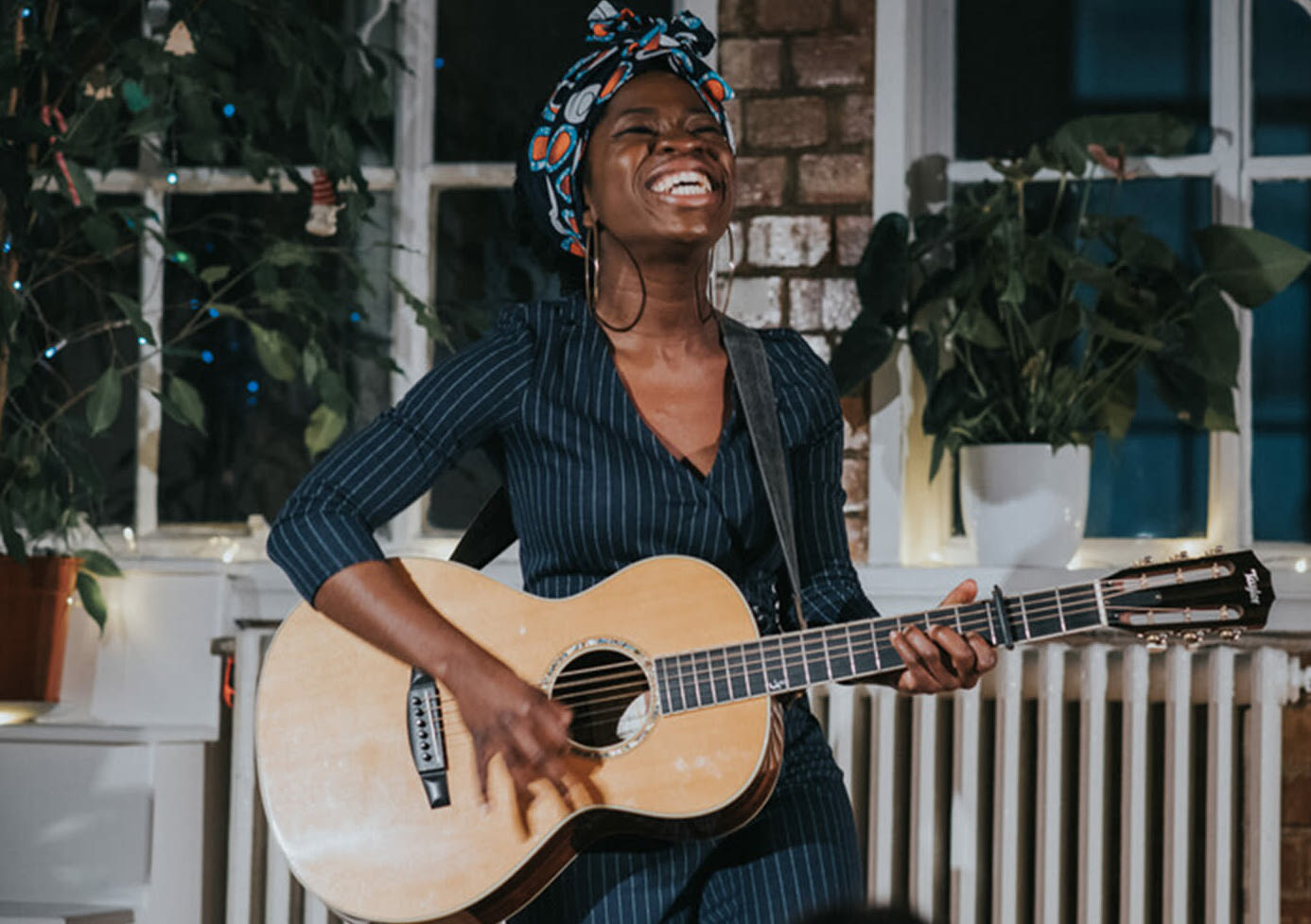
Guests are engaged throughout, not drifting to their phones.
The event has a flow: formal content balanced with lighter moments.
Entertainment reflects your brand personality: creative, professional, or playful.
Delegates leave with a positive story to share.
Music creates mood instantly.
Best for: arrivals, networking sessions, dinners.
Options: acoustic duo, jazz quartet, pianist, or DJ sets for energy.
Impact: lifts atmosphere without dominating conversation.
Woolly tip: choose live acts that complement the venue. A string trio feels perfect in a period townhouse, while a DJ set works well in a Shoreditch loft.
Breaks down barriers and gets people moving.
Best for: team offsites, workshops, icebreakers.
Options: trivia, escape room challenges, VR experiences, creative build sessions.
Impact: boosts collaboration and helps groups bond quickly.
Bring expertise or inspiration to the room.
Best for: leadership events, conferences, client sessions.
Options: industry experts, motivational speakers, guest panel hosts.
Impact: adds authority, credibility, and lasting insights.
Laughter relaxes everyone.
Best for: end-of-day sessions, networking evenings.
Options: stand-up comedians, improv troupes, light-hearted MCs.
Impact: creates shared humour and makes the event feel approachable.
Hands-on activities bring people together.
Best for: offsites, staff development, strategy away days.
Options: cooking classes, cocktail making, art workshops, problem-solving challenges.
Impact: strengthens bonds and builds skills in a fun way.
Bring wow-factor moments.
Best for: product launches, client dinners, brand showcases.
Options: dancers, theatre acts, immersive performers.
Impact: adds flair and reinforces a sense of creativity.
Capture the moments.
Best for: informal networking, socials, celebrations.
Options: branded backdrops, themed props, instant digital sharing.
Impact: creates shareable memories and doubles as event marketing.
Entertainment guests can taste.
Best for: client receptions, networking mixers.
Options: wine tastings, craft beer sessions, street food pop-ups.
Impact: interactive and sensory, sparks conversations and networking.
Give structure to connections.
Best for: professional gatherings, industry showcases.
Options: speed networking, topic tables, guided introductions.
Impact: ensures attendees leave with new contacts.
How much does entertainment usually cost?
Small acts (acoustic musicians, comedians) start from £400–£800. Larger shows or bespoke performances can run into the thousands.
Can I combine entertainment types?
Yes, mix light moments (music, comedy) with structured formats (speakers, workshops) to balance the day.
How long should acts last?
Aim for 20–40 minutes for set pieces. Keep them short enough to engage but not disrupt flow.
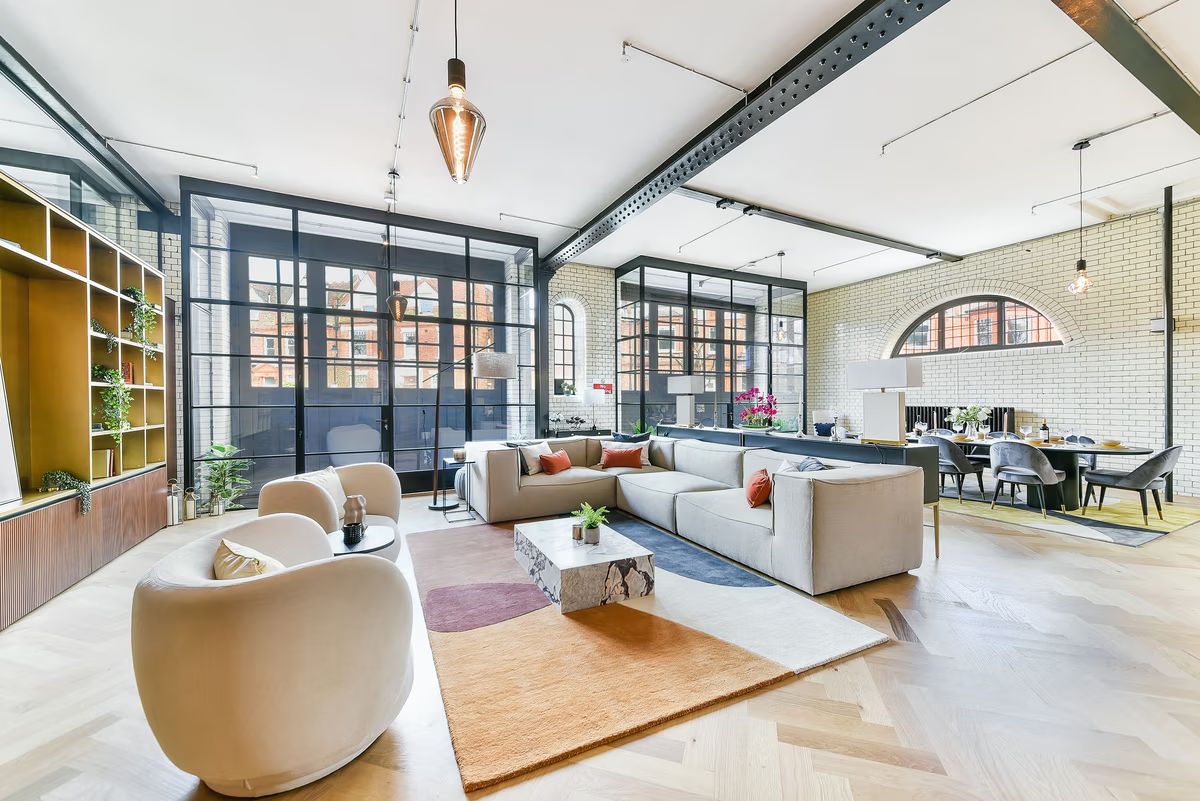
Guests feel valued and engaged from arrival.
The venue supports your event with seamless logistics.
The setting reflects your brand personality.
The day feels professional yet welcoming — not like an afterthought.
Hiring a venue sets the tone immediately.
High-quality décor and furnishings show seriousness.
A neutral, professional setting removes home-office distractions.
Your brand is reflected through styling and layout.
Woolly tip: A residential-style space with natural light and character creates warmth that typical co-working rooms can’t match.
No scrambling for equipment or supplies.
Wi-Fi, screens, whiteboards, and AV included.
Breakout areas for group work.
Reliable heating, cooling, and seating.
A venue team handles the practicalities.
Furniture arranged to your spec (boardroom, workshop, dining).
On-site support for AV and catering.
Parking and access sorted in advance.
A well-chosen venue signals professionalism.
Arrival experience feels curated, not improvised.
Guests see your attention to detail.
Atmosphere enhances credibility and trust.
Venues encourage connection.
Open layouts for mingling.
Defined spaces for coffee breaks and conversations.
A shared atmosphere that feels memorable.
Dedicated venues cut distractions.
Attendees are “in the room” rather than half-working.
Comfortable, purpose-built spaces aid concentration.
Tech set-up supports efficiency.
Flexibility matters.
Spaces can be configured to match your agenda.
Options for breakout rooms, terrace drinks, or sit-down meals.
Venues adapt to your event goals, not the other way around.
Many venues include expert coordination.
Help with timings, suppliers, and set-up.
Access to trusted caterers, florists, and AV providers.
Less stress for you, smoother execution for guests.
How much does it cost to hire a business venue in London?
From £500–£1,500 for smaller day hires; £1,500–£3,000+ for larger or premium homes.
Can I bring my own catering?
Some venues allow it, others prefer trusted suppliers. Always check for corkage or service charges.
Do venues include AV and Wi-Fi?
Most do, but confirm in advance. Ask about bandwidth for hybrid meetings.
What capacity do typical venues offer?
Boardroom: 10–14
Workshop: 20–30
Standing: 30–40
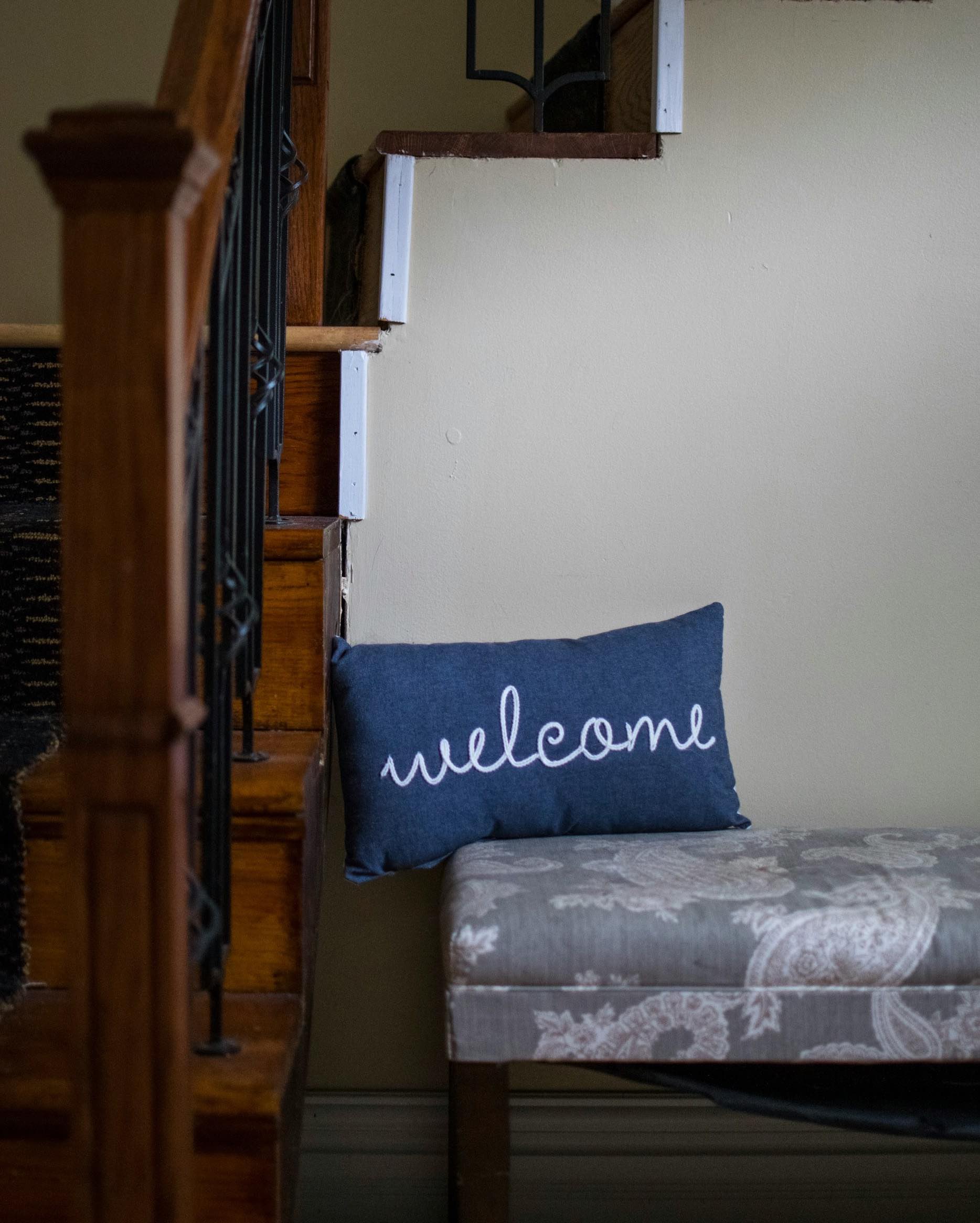
Whether you’re hosting a client meeting, a creative workshop, or a team offsite, the way you welcome your guests sets the tone for the entire experience. At Woolly Mammoth, we believe every arrival should feel effortless, inspiring, and a little bit special.
Here are our top tips to ensure your venue — whether a Shoreditch loft, a Victorian townhouse, or a riverside apartment — instantly makes people feel at ease.
A smooth check-in creates confidence from the start. Share clear instructions in advance: directions, parking, door codes, Wi-Fi details. When guests walk in, they should feel informed, not uncertain.
A personal greeting, signage, or even a small refreshment station can elevate the moment. The message is simple: we’ve been expecting you.
A printed or digital welcome manual saves time and answers questions before they’re asked. Include:
Wi-Fi and tech set-up instructions
House rules (noise, smoking, timings)
Emergency contacts
Local recommendations — the best lunch spots, coffee shops, or bars nearby
It’s not just practical; it shows you’ve thought of everything.
Ambience matters. Natural light, warm lighting in the evening, comfortable seating, and uncluttered décor instantly put people at ease.
In Woolly Mammoth homes, we style spaces with soft textures, greenery, and tasteful artwork to balance professionalism with comfort. A vase of fresh flowers or a subtle fragrance can make the space feel even more inviting.
It’s the little details that guests remember:
A handwritten welcome note
Locally sourced snacks or drinks
A playlist softly in the background
Recommendations tailored to the group (best dinner spots for a client team, or hidden galleries for a creative crew)
These touches turn a standard booking into an experience.
A productive day requires more than four walls. Ensure essentials are ready: pens, paper, chargers, power outlets, projection screens, whiteboards, and comfortable chairs.
Woolly Mammoth spaces are designed for flexibility — breakout areas for small groups, open-plan living rooms for workshops, and dining spaces that transform into meeting tables.
Quick replies to questions before and during the booking build trust. Whether it’s an extra flipchart, catering request, or help with tech, being available shows professionalism and care.
Exceptional hosting is about surprises: a welcome basket, remembering a guest’s birthday, or offering a guided tour of the venue. Small gestures create big memories — and often, repeat bookings.
How do I create a welcoming atmosphere?
Blend style and comfort: warm lighting, fresh flowers, cosy seating, and a few personal touches.
What should I include in a welcome guide?
Wi-Fi, access info, local tips, house rules, and emergency contacts.
What amenities matter most for business events?
Reliable tech, comfortable seating, power access, and breakout space for collaboration.
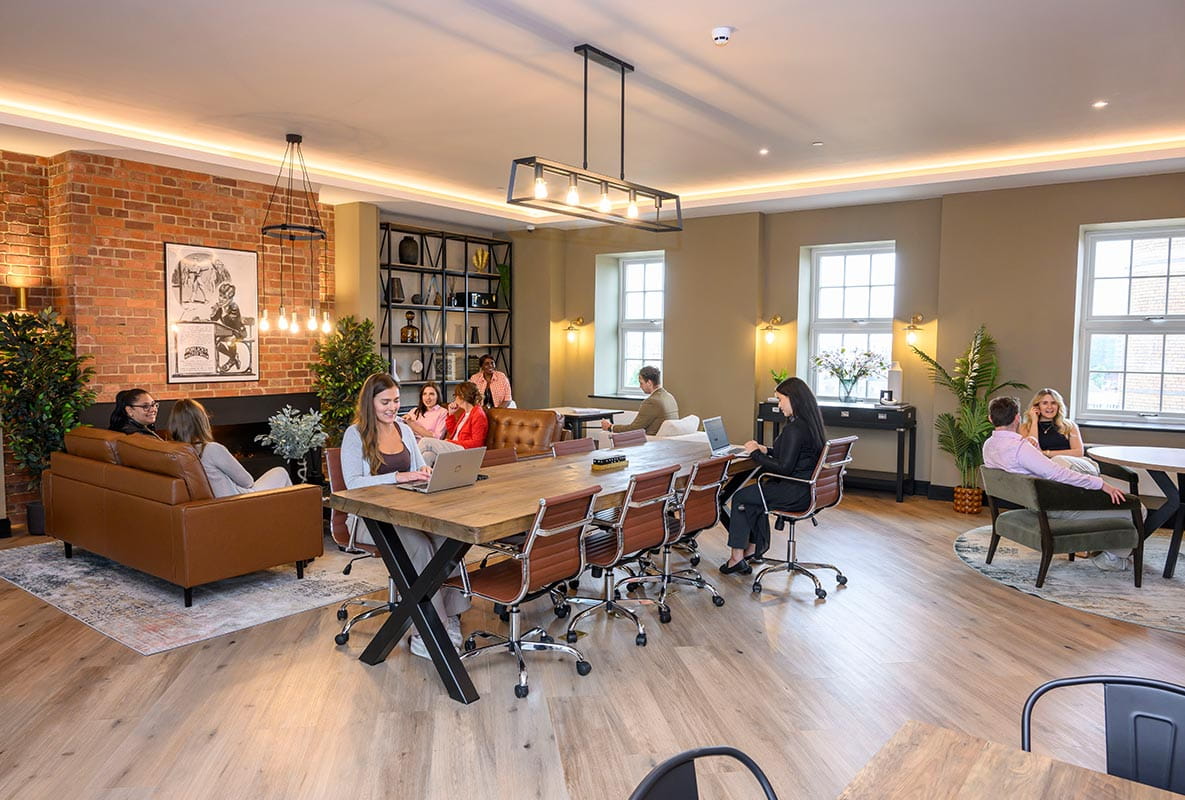
Think function, flow and access.
Quick checks
Size and flow: Can 10–40 guests circulate, sit, workshop and dine without bottlenecks.
Layout: One clear main space, plus a breakout or two. Good natural light helps for photoshoots.
Access: Step count, lift, stair width, load-in route, quiet hours, neighbours.
Services: Reliable Wi-Fi, power points every 2–3 metres, kitchen or servery, WC ratio.
Location: Proximity to Tube or parking. Clear arrival instructions.
If you pass most of the above, proceed. If not, consider limiting to smaller meetings or shoots.
You must operate within local rules and your lease.
Check your lease or mortgage for professional use and short-term hire allowances.
Ask your local council about any planning or licensing needs for events, amplified music or alcohol service.
Insurance: Public liability, contents cover for commercial use, and a sensible security deposit policy.
Woolly Mammoth note: we help hosts align deposit, house rules and cover to the event type.
Specialise to stand out.
Best fit uses: e.g. strategy offsites, creative workshops, leadership dinners, brand shoots.
Capacity bands: Seated boardroom 10–14, theatre 20–30, standing 30–40.
Signature features: Warehouse brick and steel, period detailing, terrace with skyline, statement kitchen, acoustic quality.
Clear house rules: No late-night parties, respect neighbours, approved suppliers list, quiet hours.
Create a setting that feels both premium and practical.
Room plan
Zones: welcome, main session, breakout, dining, quiet corner.
Furniture: modular tables, 14–20 stackable chairs, a few soft seats, coat rail, credenza for catering.
Lighting: warm ambient, brighter task lighting near tables, dimmable for dinners.
Sound: soft furnishings or rugs for echo control, small speaker for background music.
Styling touches
Plants, a few framed prints, neatly managed cables, fresh flowers on the welcome table.
Dual-band Wi-Fi with printed QR code.
65–85" screen or short-throw projector, HDMI and USB-C, spare adapters.
Whiteboard or flipcharts with pens, Post-its, extension leads.
Kitchen kit for coffee and teas, fridge space, filtered water.
Toiletries basket, lint roller, phone chargers, first-aid kit.
Create a one-page Tech & House Guide and place it at the entrance.
Anchor value to experience, not just square footage.
Benchmark against comparable London homes and boutique studios.
Create bands: weekday day rate, evening add-on, full day, shoot rate.
Inclusions: Wi-Fi, screen, whiteboard, basic refreshments.
Add-ons: facilitated workshop kit, on-site support, styling reset, overtime, catering coordination.
Deposits and fees: security deposit, cleaning, overtime per 30 minutes.
Clarity reduces back-and-forth and improves conversion.
Photography: bright, natural light, wide shots that show flow, detail shots that show finish.
Story: what kinds of events work best here, transport notes, capacity in three formats, house rules.
Distribution: feature on Woolly Mammoth, plus a lightweight brand page and a Google Business Profile.
Proof: short case studies and 2–3 testimonials from early bookings.
Make the arrival feel effortless.
Before the day
Confirmation with access details, transport tips and a 30-second house video if possible.
Vendor coordination window and load-in plan.
On the day
Signage at street and door, tidy welcome table, water and glasses set.
Swift tech check. A named contact on WhatsApp.
After
10-minute walk-through, deposit handling policy, thank-you note and review request.
Clear max capacity, soft close hours, noise plan.
Fire exits kept clear, extinguishers visible, first-aid kit location marked.
Incident log template and a simple evacuation note in the guide.
After every booking, note:
What layout guests actually used
Any friction in access or tech
Two small upgrades to solve the above
A venue that evolves gets better reviews and repeat clients.
What events suit residential venues best?
Daytime offsites, leadership meetings, creative workshops and brand shoots. Controlled dinners work well. Late-night parties do not.
Do I need to provide catering?
You can keep it simple with coffee, tea and water, then offer recommended suppliers. Many clients prefer bringing their own.
How do I handle neighbours?
Share quiet hours and contact details, manage load-in, and keep doors closed during music or presentations.

Success in venue hire isn’t just about filling the calendar — it’s about the right bookings. That means qualified enquiries that match your capacity, style, and house rules, fewer admin back-and-forths, and stronger returns through higher day rates and better midweek utilisation.
Pick the groups you serve best. Speak to them directly.
Core segments
Corporate offsites and leadership meetings
Creative workshops and brand shoots
Intimate press breakfasts and product showcases
Private dining for senior teams
Decide your lanes
Capacity bands. Boardroom 10 to 14. Theatre 20 to 30. Standing 30 to 40.
Clear house rules. Daytime focus. No late-night parties. Quiet hours respected.
Signature features. Period detailing, warehouse textures, roof terrace, statement kitchen, great natural light.
A venue is more than a postcode.
Name and tone. Confident, warm, professional.
Visual identity. Consistent colour, type, and logo across listings, decks and socials.
Proof. One paragraph case studies with a quote, three strong photos, and measurable outcomes.
Woolly tip: lead with atmosphere first, logistics second. Buyers choose with their eyes, then validate with details.
Your images are your sales team.
Natural light. Wide angles that show flow between zones.
Show five key setups. Boardroom, workshop, dining, standing reception, shoot layout.
Styling. Cables hidden, glasses set, flowers at welcome point, coat rail visible.
Short walkthrough video. Under 45 seconds. Entrance to main space to breakout to terrace.
Create a simple brand shot list and reuse across web, brochures and socials.
Your page should answer every pre-booking question in 90 seconds.
Clear headline. What you are, for whom, where.
Capacity table. Boardroom, theatre, dining, standing.
Downloadable factsheet. PDF with specs, floor plan, rules and pricing outline.
Location help. Nearest Tube, parking notes, load-in route.
SEO basics.
Title: “Event Venue Hire in [Area], London | [Venue Name]”
H1 repeats the main intent
Add schema: LocalBusiness and Place
Internal links to workshop and photoshoot category pages
Tracking. UTM links for every directory and ad. One enquiry form with source field.
Spread risk across channels.
Woolly Mammoth listing. Targeted corporate demand, editorial curation, hands-on support.
Google Business Profile. Map pack visibility. Add photos monthly, collect reviews.
Select directories. Quality over quantity. Keep details consistent.
Press and blogs. Pitch “behind the scenes” shoots or design features.
Quality posts over daily filler.
Content mix.
Space stories. Before and after, layout flips.
Proof that de-risks. Client logos with permission, mini case studies.
Planning expertise. Run of show tips, seating hacks, menu ideas.
Formats. Reels from the walkthrough, short carousels with layouts, one client quote graphic.
Collaboration. Tag caterers, florists, facilitators and photographers. Cross-post to reach new buyers.
Calls to action. “See rates and floor plan” not just “Enquire”.
Two flows keep the calendar healthy.
Quarterly update. New photos, availability windows, one case study, one offer for midweek.
Post-enquiry nurture. Auto-send factsheet, floor plan and three dates. Follow-up in 48 hours with a proposed layout.
Segment by use case rather than one big list.
Create a small circle of trusted partners.
Corporate caterers, facilitators, photographers, stylists, AV.
Offer a neat pack. Commission, fixed perks, or shared content.
Co-host a micro showcase each quarter. Ten planners. One live workshop. Professional photos shared with all partners.
Clarity converts.
Rate card. Day rate, evening add-on, full day, shoot rate.
Includes. Wi-Fi, screen, whiteboard, water, basic reset.
Add-ons. Overtime, styling reset, equipment upgrade, on-site support, catering coordination.
Levers. Midweek discount, last-minute gaps, multi-day packages.
Publish a range on the site. Detail the exact quote after a discovery call.
What gets measured gets better.
Enquiries by channel
Conversion rate by use case
Average booking value and margin
Lead time and utilisation by weekday
Photo or page that most often precedes enquiries
Tweak imagery, copy and pricing quarterly based on the data.
Which channels work best for London corporate events?
Woolly Mammoth, Google Business Profile, a strong venue page, and a small set of quality partners. Socials support credibility rather than drive most bookings.
Do I need to publish prices?
Share a range and what is included. It filters time-wasters and speeds decisions.
How many photos do I need?
Ten to fifteen. Five wide shots for layouts, five details, five lifestyle moments.
Can I host private parties?
If neighbours and lease allow. Most residential-style venues perform best with daytime professional use.

The venue supports your agenda with the right facilities.
Guests feel valued by the setting and service.
Costs match your budget without hidden extras.
The booking process feels clear and stress-free.
Capacity: 6–10
Typical cost: £40–£90 per hour / £250–£600 per day
What you get: Wi-Fi, screens, tea & coffee, but limited character.
Best for: quick catch-ups, interviews, and central convenience.
Capacity: 10–20
Typical cost: £80–£150 per hour / £600–£1,200 per day
What you get: good light, flexible layouts, creative vibe.
Best for: workshops, design sprints, small brand events.
Capacity: 10–30
Typical cost: £120–£250 per hour / £1,000–£2,000 per day
What you get: stylish homes with breakout zones, natural light, and a warm, professional feel.
Best for: team offsites, client workshops, product shoots.
Woolly tip: Residential venues blend professionalism with personality. They make guests feel welcome while elevating your brand.
Capacity: 20–40
Typical cost: £200–£350+ per hour / £1,800–£3,000+ per day
What you get: statement architecture, premium finishes, and prestige locations.
Best for: leadership offsites, brand showcases, high-profile client sessions.
Co-working meeting room
💼 Capacity: 6–10
💷 £40–£90 per hour / £250–£600 per day
ℹ️ Functional, central, limited character
Boutique studio / gallery
💼 Capacity: 10–20
💷 £80–£150 per hour / £600–£1,200 per day
ℹ️ Good light, flexible layouts
Residential venue (Woolly style)
💼 Capacity: 10–30
💷 £120–£250 per hour / £1,000–£2,000 per day
ℹ️ Styled homes with breakout zones
Landmark or premium home
💼 Capacity: 20–40
💷 £200–£350+ per hour / £1,800–£3,000+ per day
ℹ️ Statement features, top locations
Guides only. Always confirm inclusions and overtime rules.
Location: Zone 1 postcodes and transport links increase costs.
Capacity: Larger rooms mean higher rates.
Facilities: Screens, AV, and breakout spaces raise value.
Style: Character homes and design-led venues carry a premium.
Timing: Midweek daytimes are better value than evenings or Fridays.
Always check the fine print. Common add-ons include:
Cleaning/reset fees
Overtime billed in 30-minute blocks
Deposits held against damage
Catering service charges or corkage
Equipment upgrades (extra mics, hybrid kits)
VAT not always included in quotes
Is it cheaper to hire by the hour or by the day?
For anything over five hours, a day rate is usually more cost-effective.
Do venues include catering?
Some include basics like tea and coffee. Full catering is usually an add-on or through a partner.
Can I bring my own suppliers?
Often yes, but check house rules. Some venues charge corkage or coordination fees.
How far in advance should I book?
For central London, 4–6 weeks is safe. Premium homes and peak dates go faster.
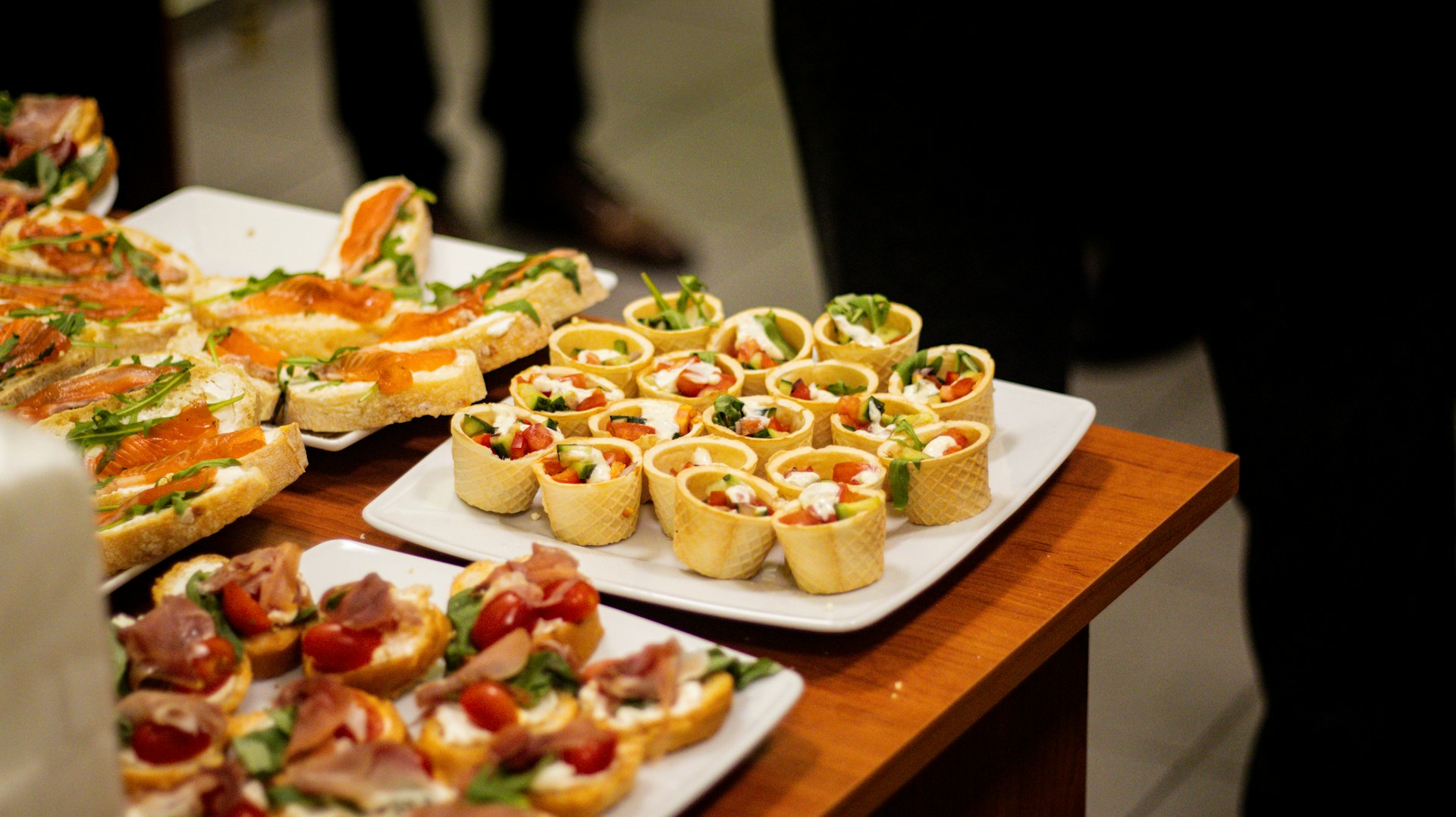
London is one of the world’s busiest business hubs, hosting thousands of meetings, workshops, product launches and networking events every year. No matter the occasion, catering is one of the most important elements of the experience. Good food elevates the atmosphere, supports your brand image and helps your guests feel looked after.
But how much does catering actually cost in London? Prices vary widely depending on service style, menu design and event format. This guide breaks down the typical cost per person, the factors that influence pricing and how to plan a menu that suits both your event and your budget.
● Catering for corporate events in London typically ranges from £30 to £150 per person, depending on service level and menu complexity.
● Negotiating with reputable caterers can help secure competitive prices or packaged deals.
● Guest count, menu type, dietary requirements and staff needs all significantly affect cost.
● Choosing simple, seasonal dishes helps keep costs down without compromising quality.
London offers an exceptional variety of catering styles suitable for different corporate settings, from intimate board meetings to high-profile receptions. Common formats include:
● Buffet catering: A flexible option that allows guests to self-serve from a range of dishes.
● Plated meal service: A formal seated experience with two to three courses, suitable for VIP events.
● Canapés and finger food: Ideal for networking sessions where guests move around.
● Interactive food stations: Chefs prepare food live, adding entertainment and engagement.
● Themed menus: Menus inspired by global cuisines or designed to match a brand or event theme.
The style you choose will directly influence the overall cost per person.
Catering pricing in London depends on several elements that you should assess when planning your budget:
● Menu choice: Premium ingredients such as seafood or high-quality cuts increase the cost.
● Guest numbers: More guests require more food, equipment and staff.
● Service style: A formal plated service is generally more expensive than a buffet or drop-off catering.
● Dietary needs: Vegan, gluten-free, halal or allergy-friendly meals may require specialised preparation.
● Location and timing: Central London events and peak seasons may attract higher fees.
● Staffing and presentation: Higher staff ratios and intricate presentation styles add cost.
Understanding these variables helps create a realistic catering budget from the start.
Catering prices in London vary widely depending on the level of service and the overall style of your event. As a general guide:
A basic buffet usually falls between £30 and £50 per person. This is suitable for simple internal meetings or informal gatherings.
A standard buffet typically ranges from £50 to £80 per person, offering a broader selection and slightly higher quality.
A three-course plated meal normally costs £80 to £120 per person, making it a common choice for formal business dinners or client events.
A fine dining experience starts at £100 per person and can rise above £150, depending on the reputation of the caterer, the ingredients selected and the level of staffing required.
These prices provide a realistic starting point, although your final quote will depend on your menu, guest count, service style and any bespoke requirements.
A tailored menu is one of the best ways to elevate the event experience while ensuring your guests feel considered. When designing your menu:
● Include options for dietary needs such as vegetarian, vegan, gluten-free, halal or nut-free.
● Use seasonal, local ingredients to reduce costs and enhance flavour.
● Match the dishes to the tone of your event, from relaxed comfort food to polished, gourmet plates.
Example of ingredient choices:
When developing a customised menu, it helps to think in terms of dietary categories and the types of ingredients typically associated with each one. Here are some examples you can share with your caterer:
Vegetarian options often feature ingredients such as roasted vegetables, cheeses, herbs, grains or egg-based dishes.
Vegan dishes usually rely on plant-based proteins, legumes, vegetables, nuts, seeds and dairy-free alternatives.
Gluten-free choices may include ingredients like rice, quinoa, potatoes, corn, pulses or items prepared with alternative flours.
Nut-free options tend to replace nuts with safe substitutes such as seeds or seed-based products.
Themed or regional cuisines may incorporate unique spices, marinades and flavour profiles inspired by Mediterranean, Middle Eastern, Asian or fusion styles.
These ingredient categories can help shape a menu that is inclusive, creative and aligned with the tone of your event.
The caterer you select will influence not only the food but the entire guest experience. When evaluating options:
● Choose caterers with a strong track record in corporate events.
● Confirm that they can accommodate custom menus and dietary restrictions.
● Request sample menus or book a tasting session.
● Check client testimonials and online reviews.
● Ensure they hold the correct licences and insurance.
A reliable caterer should feel like a partner who supports your objectives, not just a supplier.
When you have a shortlist of caterers, compare their quotes carefully. Ask yourself:
● Does the price include staff, service, equipment and clean-up?
● Are tables, linens, cutlery and glassware included?
● Is VAT or a service charge added separately?
● Are there corkage fees if you bring your own alcohol?
Transparency is key. Do not hesitate to ask caterers whether they offer discounts for repeat bookings, non-peak days or package bundles. Negotiation is not only about reducing costs but also about increasing overall value.
Catering is only part of a corporate event budget. Additional costs may include:
Venue hire
AV equipment such as microphones, speakers or projectors
Transportation for guests or equipment
Permits and licences, especially for alcohol
Accommodation for out-of-town attendees
Event insurance
Extra staff, including hosts or cleaning teams
Accounting for these early avoids unexpected last-minute expenses.
You can deliver a memorable event without overspending by following a few smart strategies:
● Select seasonal produce to reduce ingredient costs.
● Choose buffet or family-style service to minimise staff needs.
● Reduce the number of courses and focus on quality.
● Provide one or two signature drinks instead of a full open bar.
● Ask for packaged deals rather than paying for everything separately.
Strategic decisions can help you stay within budget without compromising on quality.
Are there hidden fees I should consider?
Yes. Ask about VAT, service charges, corkage fees and equipment hire. These can add 15 to 30 percent to the final bill.
How early should I book a caterer?
Book at least two to three months ahead. For summer or December events, secure your caterer four to six months in advance.
Can I bring my own alcohol?
Many venues allow it but may charge a corkage fee. Always confirm in advance.
Can caterers accommodate specific dietary needs?
Professional caterers can provide a full range of dietary options, including vegan, vegetarian, gluten-free, halal and allergy-safe meals.
What is the ideal staff to guest ratio?
For plated meals, around one staff member for every 10 to 12 guests. For buffets, one for every 20 to 30.
Delivering a successful corporate event in London requires thoughtful planning, especially when it comes to catering. By understanding typical costs, exploring different service styles and tailoring your menu, you can create a polished and memorable experience that supports your brand.
Choose a caterer with strong corporate experience, negotiate transparently and anticipate additional expenses early. With the right partner and a smart budgeting approach, you can host an event that impresses clients, colleagues and stakeholders while staying firmly within budget.
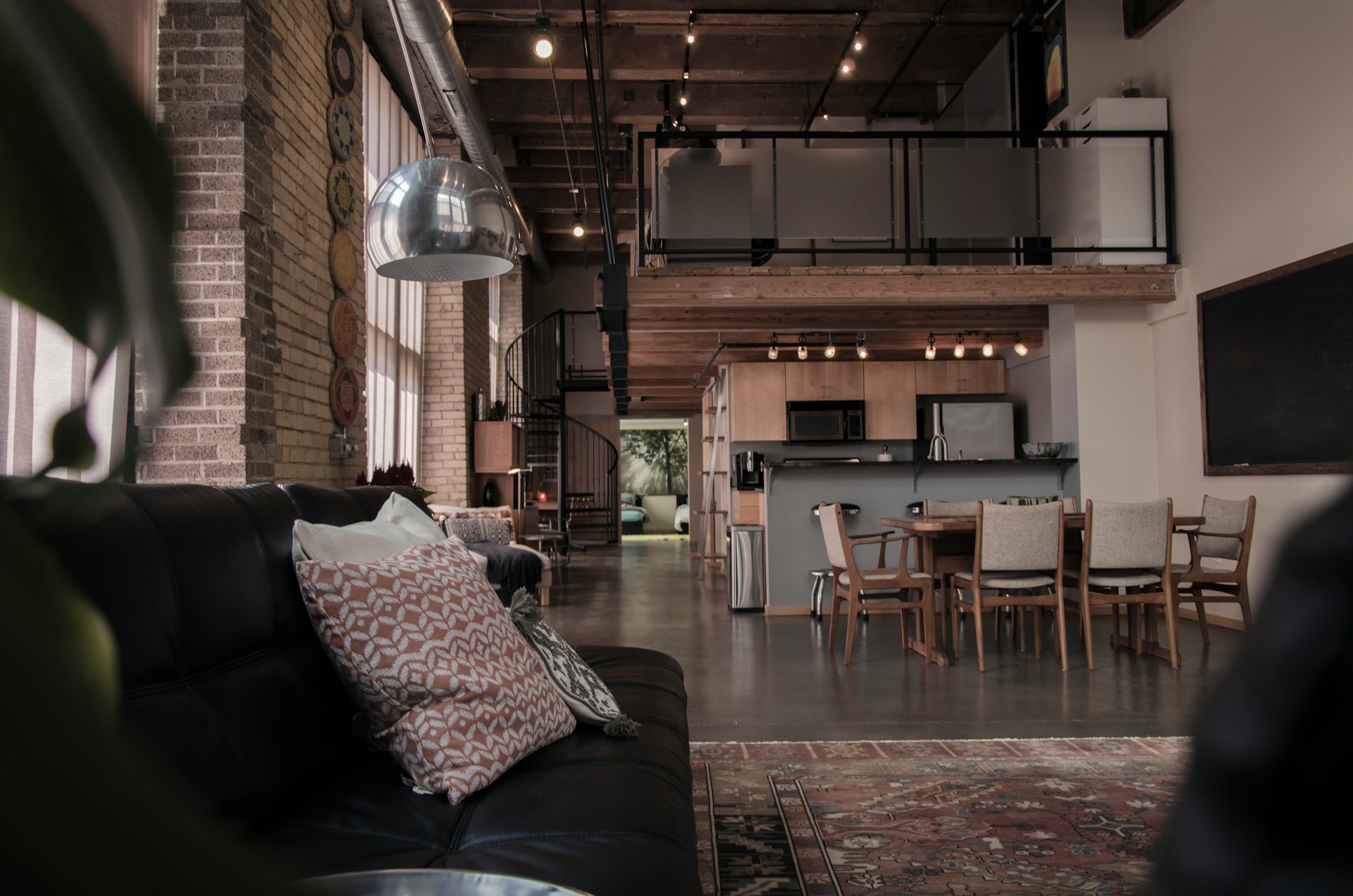
Booking a meeting room seems simple, but timing can make all the difference. Whether you are organising a client presentation, a team workshop, or a large corporate event, knowing how early to reserve a space helps you secure the right room, the right location, and the right facilities.
This guide explains when to book, what affects availability, and how to avoid last-minute stress while ensuring a smooth and professional experience for your team or clients.
Securing your meeting room ahead of time gives you:
● Better availability and choice
● Access to the most popular locations and premium amenities
● Enough time to organise catering, equipment and logistics
● Flexibility to adjust plans if something changes
Leaving it too late often means limited options, inconvenient time slots, or higher prices.
Several variables influence how far in advance you should book, especially in high-demand cities like London.
Rooms in central or well-connected areas are booked much earlier, particularly during the workweek and peak business hours.
Larger rooms or specific layouts like boardroom, U shape or theatre style tend to disappear faster because fewer rooms can accommodate them.
If you need screens, hybrid meeting tools, video conferencing, microphones or advanced AV, book earlier. High-tech rooms are always in demand.
Large companies often book their preferred venues months in advance, reducing availability for others.
Some venues prioritise regular corporate clients or longer bookings.
The busiest times are mid morning and early afternoon. Very early or late meetings offer more flexibility.
Strategy days, planning sessions, and conferences create demand spikes during Q1 and Q4, as well as spring and early autumn.
Understanding these factors helps you plan realistically and avoid competing for last remaining time slots.
Before reserving a room, clarify your needs. This will determine how early you should book.
Consider:
● Number of attendees
● Preferred location
● Room layout
● Wi-Fi and AV requirements
● Hybrid meeting support
● Catering or refreshments
● Accessibility needs
● Your flexibility on time and date
The more specific your requirements, the earlier you should secure the room.
Some days and months require earlier booking than others. Meeting rooms fill up faster during:
● Tuesdays, Wednesdays and Thursdays
● 9am to 12pm
● Q1 and Q4
● Spring and autumn conference seasons
● December event periods
For meetings scheduled during these periods, booking well in advance is essential.
Here is a practical guideline for how far ahead you should book various types of meetings:
● Internal team meeting: 1 to 2 weeks
● Client presentation: 2 to 3 weeks
● Workshop or training session: 3 to 4 weeks
● Large internal event or offsite: 1 to 3 months
● High demand locations: 1 to 2 months
● Premium or high tech rooms: 4 to 6 weeks
Booking within these timeframes helps avoid stress and ensures you secure the space your event requires.
● Guaranteed availability
● More choice of layouts and locations
● Easier coordination of catering and logistics
● Lower risk of last-minute compromises
● Less flexibility if plans change
● Some venues may require early payment
● Risk of overcommitting if the meeting is not fully confirmed
Aim for a balance that protects availability without locking you in too early.
Yes. Each meeting room has a maximum capacity. Always check the limit before booking.
Some venues allow external catering, while others require the use of in-house suppliers. Confirm the policy in advance.
Standard bookings include Wi-Fi, tables and chairs, screens, AV equipment and access to whiteboards or flip charts. Premium rooms may offer extras such as refreshments or concierge support.
Most venues have cancellation fees or notice periods. Review the terms carefully before confirming.
Sometimes. Fees may apply for specialist equipment, extended hours, late checkouts or additional cleaning. Ask for a clear and complete quote.
To secure the right meeting room at the right time, aim to book at least 2 to 3 weeks in advance for standard meetings and much earlier for larger or more specialised events. Consider your exact requirements, the location you prefer, the technology you need and any seasonal peaks.
Planning ahead gives you more choice, fewer compromises and a far smoother experience for you and your guests. With the right preparation, your meeting will run efficiently, professionally and without last-minute complications.
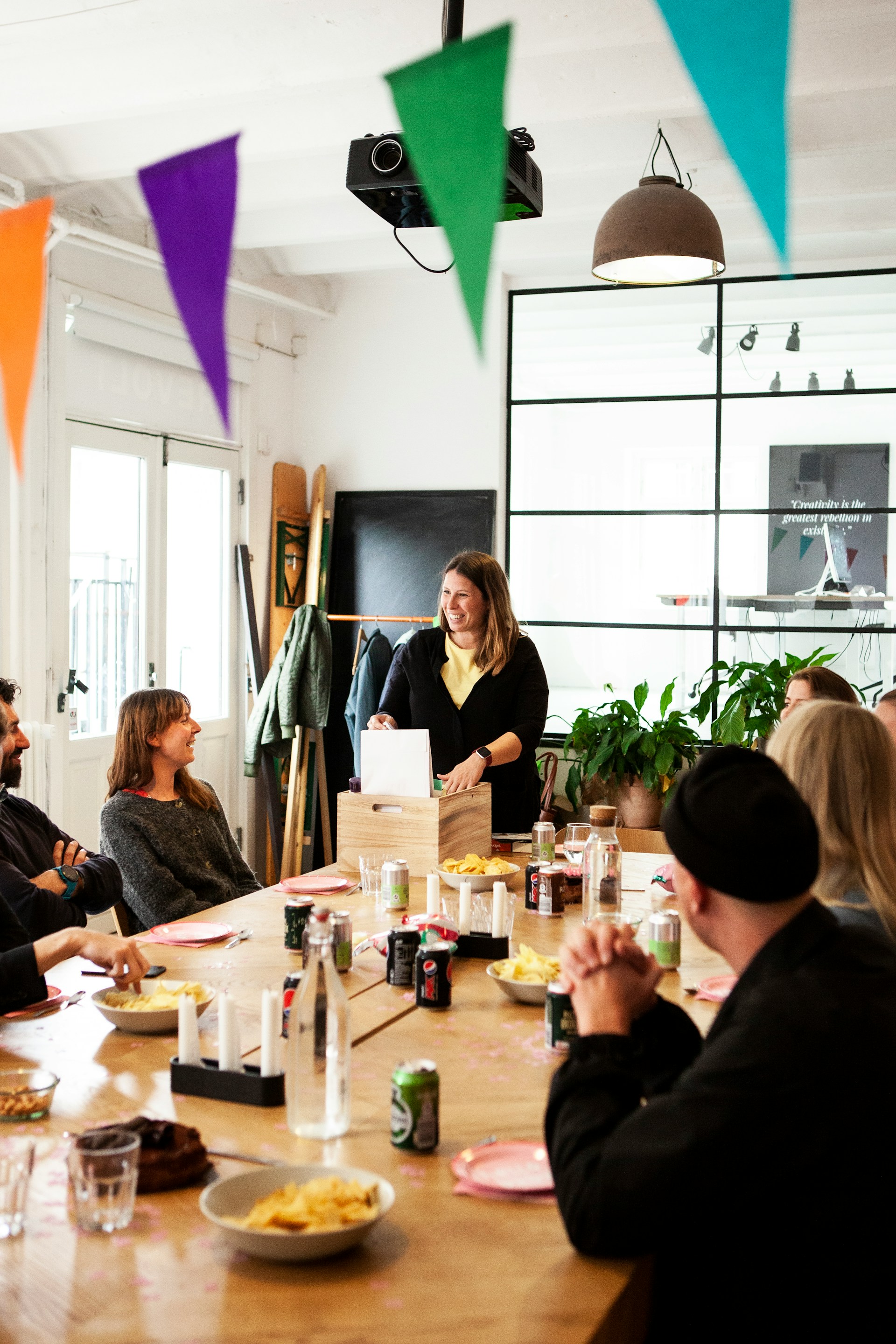
This guide walks you through each stage of planning a corporate party, from defining your objectives to evaluating the impact afterwards. With the right approach, your event can be both enjoyable and strategically valuable.
Every successful corporate party begins with clarity. Ask yourself what the event is meant to achieve. Are you rewarding performance, improving team morale, building client relationships, or introducing a new product?
Once your objectives are clear, you can shape the tone and structure of the event around them. Clear goals will also help you measure the outcome afterwards, whether through feedback, engagement, or new business opportunities.
Budgeting should be done early, since it affects every other decision. Consider the main expense areas, including venue hire, catering, entertainment, audiovisual equipment, staff, decorations, and a small contingency allowance.
To stretch your budget further, partnerships or in kind sponsorships can be useful. A supplier may offer reduced rates in return for visibility, for example.
Choosing the venue is one of the most important decisions. A well selected space can elevate the experience for guests and support your objectives. When comparing locations, consider capacity, ease of access, parking and transport links, Wi Fi, AV compatibility, ambience, and on site facilities. A site visit is essential to confirm the layout and practical details.
Once the venue is booked, you can move forward with invitations.
Think carefully about who should attend in order to support your aims. This may include internal teams, leadership, partners, or key clients.
Formal invitations create a sense of professionalism and help set expectations. Use British etiquette, correct titles, clear RSVP details, and the day, month, year format, such as Friday, 20th June 2025.
Make sure your invitation includes essential information such as dress code, arrival instructions, accessibility notes, and any requirements relating to the venue.
A strong programme keeps energy high and maintains a smooth flow throughout the event. Blending formal and informal elements works well and ensures there is something for everyone.
Consider a welcome speech, short recognition moments, presentations, team activities, relaxed networking time, and breaks for food and drink. Align the structure with your objectives. For example, collaborative challenges are ideal for team building, while longer networking windows are better for client focused events.
Catering has a major impact on guest experience. Offer a varied menu that includes vegetarian, vegan, gluten free, and allergy friendly options. Match the service style to the event. A buffet suits relaxed social gatherings, while a plated dinner is better for formal events. Canapés are ideal for standing receptions when networking is the priority.
Choose caterers with proven experience in corporate events and communicate any timing or thematic requirements early.
Creating the right atmosphere transforms a standard gathering into a memorable occasion. Choose a theme that complements the purpose of the event and supports the tone you want to set.
Popular corporate themes include Casino Royale, Great Gatsby, contemporary festival style, seasonal motifs, and futuristic or tech inspired concepts.
Entertainment can range from live bands and DJs to interactive performers, photo booths, virtual reality stations, or team challenges. Décor should reinforce the theme and remain practical for guest movement and supplier access. Work with experienced suppliers to keep everything visually cohesive.
Strong logistics are essential to ensure smooth execution on the day. Develop a detailed run sheet that outlines arrival times for suppliers, setup periods, entertainment cues, speeches, catering timings, and breakdown procedures.
Organise transport where needed, confirm accessibility arrangements, prepare clear signage, and set up a registration or welcome desk. Make sure all suppliers receive the final schedule and know whom to contact during the event.
Appoint a dedicated coordinator or external team to oversee operations so you can focus on hosting.
Once the event concludes, take time to reflect. Gathering feedback from guests, staff, and suppliers will help you understand what worked well and what can be improved. Use surveys, follow up emails, and informal conversations to collect insights.
Review the event against your original objectives. Did it support morale, strengthen relationships, or generate leads? These insights can guide your future planning and demonstrate value to stakeholders.
How can I prevent or resolve conflicts during the event?
Assign a small team to act as discreet points of contact. A clear code of conduct and thoughtful seating arrangements can also reduce tensions.
What are some creative corporate party themes?
Try a vintage tea party, a black and white masquerade, or a sustainability inspired event with eco friendly décor and suppliers.
How do I ensure the event is inclusive?
Survey attendees in advance regarding dietary requirements, cultural considerations, and accessibility needs. Offer different styles of entertainment so guests can choose what suits them.
How can I incorporate team building in a corporate party?
Use structured but enjoyable activities such as scavenger hunts, quizzes, collaborative challenges, or informal competitions.
What helps create a memorable atmosphere?
Lighting, music, interactive features, and thoughtful décor contribute greatly. Subtle scent diffusers or branded visual elements can also elevate the ambience.
Planning an exceptional corporate party is both creative and strategic. With clear objectives, a suitable venue, the right entertainment, professional suppliers, and strong logistics, you can create an engaging experience that reflects your brand and leaves a lasting impression.
In the evolving landscape of corporate events, guests expect more than good food and a speech. They look for connection, value, and authenticity. With careful preparation, your event can deliver all three.

A great meeting room layout does far more than determine where people sit. The configuration of the space influences communication, comfort, creativity, focus, and the overall outcome of a meeting. When a room is well designed, participants feel more engaged and confident, which leads to better decision making and stronger collaboration.
Whether you are planning a board meeting, a workshop, a client presentation, or an internal brainstorming session, the layout you choose sets the tone. This guide explores the key elements that make a meeting room layout effective and offers practical ideas for creating spaces that support productivity in modern workplaces.
The physical environment of a meeting room has a direct impact on how people think, interact, and perform. Poor lighting, uncomfortable furniture, awkward seating angles, or ineffective acoustics can make even a short meeting feel draining.
On the other hand, a well considered space encourages equal participation, fluid conversation, and clear communication. When the room supports the purpose of the meeting, people connect more naturally and stay engaged for longer.
Comfort is essential for focus. If participants are uncomfortable, they will become distracted, restless, or fatigued. Ergonomic design ensures that the physical environment supports the natural posture and needs of those in the room.
Effective ergonomic features include adjustable chairs with proper back support, tables that can be configured for different meeting types, and practical accessories such as laptop stands or footrests. Small details make a considerable difference over longer meetings and help teams stay alert and productive.
Not every meeting benefits from the same layout. The best meeting rooms are adaptable and can be reconfigured quickly to match the intended style of communication.
Popular layout styles include:
Boardroom layout
Ideal for leadership meetings and client presentations. This format supports direct conversation and creates a structured atmosphere.
U shape layout
Well suited to workshops, training sessions, and collaborative problem solving. Participants can see one another clearly and engage naturally.
Classroom layout
Useful for seminars or teaching style sessions where participants need to take notes and face the presenter.
Theatre layout
Designed for larger groups. This arrangement maximises seating capacity and focuses attention on the speaker or presentation.
Lounge or circle layout
A relaxed format that works for brainstorming sessions, creative discussions, or informal team catch ups.
Choosing the right layout is about aligning the space with the purpose of the meeting.
Lighting has a significant effect on mood, energy levels, and the ability to focus. Natural daylight is ideal, as it reduces eye strain and improves alertness. Rooms with windows, skylights, or glass partitions feel brighter and more open.
When natural light is limited, use adjustable artificial lighting. Warm, dimmable lights are helpful during presentations, whilst brighter, cooler lighting works for task focused sessions. Avoid harsh overhead lights that create glare on screens or cause visual fatigue.
Light coloured walls and reflective surfaces also help amplify brightness within the room.
Modern meeting rooms rely heavily on technology, especially with hybrid and remote collaboration. Technology should enhance communication, not interrupt it.
Important features include:
High quality video conferencing equipment
Reliable wireless screen sharing
Large displays or interactive whiteboards
Accessible ports and power outlets
Stable Wi Fi
Simple controls that any team member can use confidently
When technology is intuitive, meetings run smoothly and participants stay focused on the content rather than the setup.
Clear communication is essential, so sound quality must be considered. Echoes, outside noise, and poor acoustics can quickly disrupt a meeting.
Effective soundproofing techniques include acoustic panels, carpets, soft furnishings, and properly sealed doors and windows. These reduce echo and prevent external noise from entering the room. High quality microphones and speakers also improve clarity during hybrid meetings.
Open layouts remove physical barriers and make group discussions more natural. These setups are ideal for creative workshops, project planning, or team building sessions.
The benefits include improved visibility between participants, faster idea exchange, and a more relaxed atmosphere. Flexible furniture that can be moved with ease helps teams shift quickly between group work, presentations, and discussions.
A productive meeting space is one where every participant can contribute comfortably and confidently. Accessibility should therefore be a priority.
Consider features such as wide pathways, adjustable desks, hearing assistance systems, and clear signage. Think about participants who use mobility devices, have visual impairments, or require specific sensory conditions. A well designed room ensures everyone feels welcome and included.
Biophilic elements introduce a sense of calm and improve concentration. Plants, natural textures, and warm materials soften the environment and reduce stress.
Options include potted plants, living walls, natural fibres, wooden finishes, and nature inspired artwork. These elements help create a balanced, uplifting atmosphere that makes meetings more enjoyable.
Different meeting types require different seating arrangements. Chairs and tables that move easily or fold away help teams configure the space to suit their needs. Standing tables are energising for quick sessions, whilst lounge seating works well for creative brainstorming.
Variety encourages interaction and helps people feel more at ease.
A meeting room is only effective when everything works as expected. Regular reviews help identify areas that need attention, such as malfunctioning screens, poor lighting, or worn furniture.
Maintain a routine cleaning schedule, check technology frequently, and keep essential supplies replenished. Well maintained rooms feel professional and reflect positively on the company.
The best meeting rooms combine comfort, functionality, adaptability, and atmosphere. From ergonomic furniture and natural lighting to strong acoustics and accessible design, every detail contributes to how people feel and perform.
Whether used for internal meetings or hired externally as part of a flexible workspace, a well designed meeting room boosts collaboration and supports meaningful conversations. When the layout matches the purpose, every meeting becomes more productive and engaging.
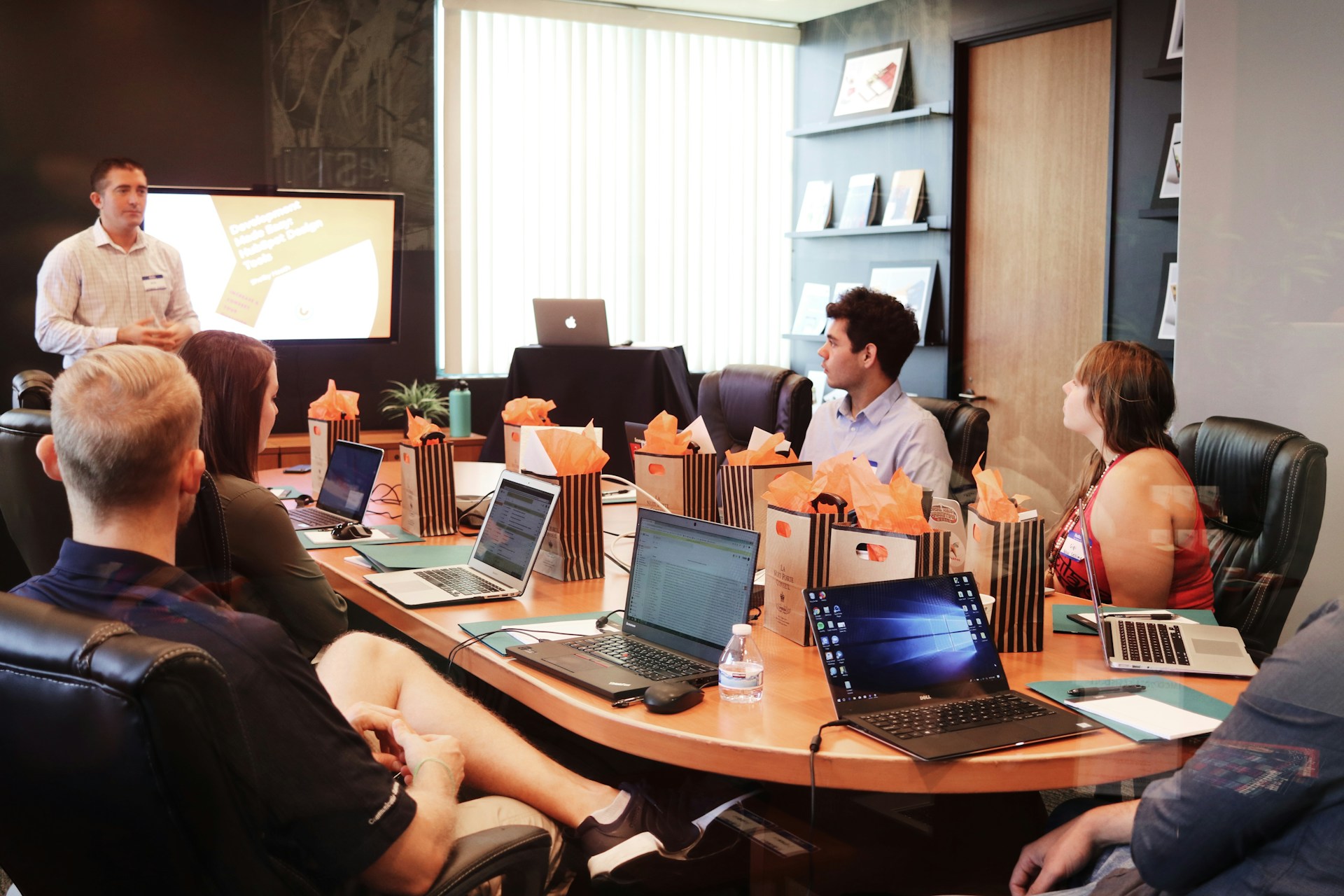
Corporate events management is the structured process of planning, coordinating, and delivering business events of all sizes. It combines creative thinking with meticulous organisation to produce experiences that support strategic objectives, strengthen relationships, and elevate a company’s profile.
A well managed corporate event feels seamless to attendees, but behind the scenes it requires careful planning, clear communication, precise budgeting, and strong logistical control. From initial concept to post event evaluation, every step contributes to the success of the gathering.
Corporate events management covers a wide spectrum of activities, including conferences, product launches, training sessions, client receptions, team building days, award ceremonies, and more. Each one plays a distinct role in how businesses engage partners, employees, and audiences.
Corporate events vary widely in purpose, scale, and format. Some of the most common include:
Conferences and conventions
Large gatherings that bring industry professionals together to share insights, network, and explore new trends. These events often include keynote speeches, panel discussions, and break out sessions.
Seminars and workshops
Smaller, focused sessions that support training, education, and skills development. They offer structured learning with opportunities for discussion and hands on exercises.
Trade shows and exhibitions
Events where companies present products and services to potential clients and the wider market. These often include demonstrations, product launches, and brand showcases.
Team building events
Activities that help employees strengthen communication, trust, and connection. These can range from creative workshops to outdoor challenges and group problem solving.
Product launches
Strategic events designed to introduce new products or services to the market. Launches often involve demonstrations, press engagement, and promotional activities.
Corporate galas and award ceremonies
Formal events celebrating achievements, milestones, and outstanding contributions. They improve morale, promote recognition, and strengthen relationships.
Corporate retreats
Off site gatherings that combine professional development with relaxation. These are ideal for strategic planning, brainstorming, and culture building.
Virtual and hybrid events
Digital or mixed format events that allow global participation through online platforms. These formats support accessibility, scale, and flexible engagement.
Every successful corporate event follows a structured process. The planning phase sets the foundation, while coordination ensures smooth execution.
The first step is defining the purpose of the event. Clear objectives guide decisions about format, content, attendees, and desired outcomes. Identifying the target audience is equally important, as this shapes the event tone, style, and delivery.
Once goals are set, organisers focus on practical elements such as:
Selecting a suitable venue
Choosing a date that avoids industry clashes
Creating a realistic budget
Identifying suppliers and partners
Planning marketing and communications
Developing an event timeline
This stage ensures that the physical, technical, and operational requirements are in place.
Execution involves managing the event in real time. This includes:
Coordinating suppliers
Managing registrations
Ensuring smooth technology setup
Overseeing catering and transport
Solving issues quickly
Supporting attendees and speakers
A clear schedule and strong communication keep everything on track.
The work does not end when the event closes. Organisers follow up with attendees, collect feedback, review performance, and document lessons learned for future improvements.
Budgeting and logistics form the backbone of corporate events management. Without them, even the most creative ideas fall flat.
A well structured budget ensures efficient resource allocation. It includes:
Venue hire
Catering
Technology and audiovisual services
Staffing
Travel and accommodation
Marketing and printing
Contingency funds
Budget planning helps prevent overspending and supports informed decision making throughout the project.
Logistics ensure that everything functions smoothly. This involves:
Venue preparation
Layout planning
Equipment installation
Scheduling
Security measures
Transport organisation
Supply coordination
Strong logistics reduce stress, minimise risks, and ensure a seamless experience for everyone involved.
Corporate events are significant investments, so measuring their impact is essential. Evaluation provides insights into what worked well and what could be improved.
Common KPIs include:
Attendance rates
Satisfaction scores
Engagement levels
Lead generation
Revenue impact
Social media performance
Internal feedback
These metrics help determine whether the event achieved its goals.
ROI compares the overall value generated by the event with the cost of delivering it. Value may include new business opportunities, increased brand visibility, stronger relationships, or internal cultural impact.
A combination of quantitative and qualitative data gives the most accurate picture of success.
How does corporate events management support client relationships?
Corporate events offer direct, personal interaction that builds trust, strengthens partnerships, and creates memorable shared experiences.
What are the biggest challenges in event planning?
Common challenges include time constraints, budget pressure, supplier coordination, and unexpected issues. Strong preparation and communication help overcome them.
Why is technology important in modern events?
Technology enables hybrid attendance, smoother registration, better engagement, and clearer communication.
Are there legal considerations when planning events?
Yes. These may include health and safety regulations, licensing, accessibility requirements, insurance, and data protection compliance.
How are corporate events evolving?
There is increasing demand for personalisation, sustainability, hybrid formats, creative design, and data informed planning.
Corporate events management is a dynamic discipline that blends strategy, creativity, and precise organisation. When executed well, corporate events strengthen relationships, enhance brand reputation, generate opportunities, and create meaningful experiences.
By understanding event types, planning with intention, managing budgets and logistics efficiently, and evaluating impact carefully, organisations can turn events into powerful tools for business growth.

Planning an event in London can be time consuming and overwhelming, especially when searching for the right venue. A venue finder can simplify the entire process by handling research, negotiations, site visits, and bookings on your behalf. This saves valuable time and often leads to better deals, thanks to established industry relationships.
But how much does it cost to hire a venue finder in London, and is it worth the investment? This guide breaks down the pricing, the factors that influence cost, and the value a professional venue finder can bring to your event.
A venue finder acts as your partner in sourcing and securing a suitable space for your event. Their responsibilities typically include:
Understanding your event requirements, such as budget, location, capacity, and style
Researching suitable venues based on your criteria
Creating a shortlist for you to review
Arranging and attending site visits
Negotiating rates and contract terms
Managing booking details and liaising with venue teams
Handling any special requests or logistical considerations
Venue finders rely on strong industry knowledge and networks, which allow them to identify hidden gems, negotiate effectively, and secure reliable venues that match your needs.
Venue finder fees vary, and the total cost depends on several factors:
London is one of the most in demand event markets in the world. Prime central areas, such as Soho, Shoreditch, Westminster, and Mayfair, often require more extensive research and faster response times, which can affect the price of the service.
Complex events, such as large corporate conferences, multi room bookings, or bespoke brand activations, require more time and coordination than a straightforward meeting or dinner. The more tailored the search, the higher the service cost may be.
An event with hundreds of guests requires a more thorough search, additional venue checks, and deeper consideration of logistics such as access, layout, and facilities.
A short timeline may require urgent searches, priority responses, and fast negotiations, which can increase the cost of the service.
Some venue finders offer broader event support, such as catering coordination, audiovisual setup, décor recommendations, or on site management. These add ons increase the final cost.
Established venue finders with strong networks and proven results typically charge higher fees, but they also tend to deliver faster and more reliable outcomes.
A skilled venue finder may save you money by negotiating better rates, securing added value, or avoiding hidden fees. This negotiation expertise depends on the professional’s experience and connections.
Venue finders in London use one of three common pricing models:
Many venue finders offer their service at no direct cost to you. Instead, they receive a commission from the venue you book. This is common in the corporate events industry.
Some finders charge a fixed fee based on the complexity of your event. This option is more common for bespoke requirements.
A smaller number of venue finders charge a percentage of the total spend. This typically applies to large scale or multi day events.
Understanding the pricing model upfront is essential so you know exactly what is included and whether there are any additional charges.
Choosing the right venue finder requires more than looking at cost alone. Consider the following:
Their knowledge of the London events market
The variety of venues they work with
Their responsiveness and communication style
Their ability to negotiate valuable perks or savings
Testimonials or case studies from previous clients
Whether their pricing model aligns with your budget
The best venue finder is one who understands your specific needs and can present strong venue options quickly and efficiently.
When reviewing a venue finder’s proposal, pay close attention to:
Cancellation policies
Additional service charges
Contract terms
Payment structure
Timeline expectations
Do not hesitate to negotiate. Depending on event size, repeat bookings, or long term partnerships, many venue finders may be open to discounted fees or added support.
Hiring a venue finder can be extremely valuable, particularly for busy teams, corporate clients, or anyone unfamiliar with London’s event landscape. Benefits include:
Saving hours of research and admin
Access to venues you may not find independently
Better rates through industry relationships
Professional guidance during site visits
Reduced stress and faster decision making
Avoiding common booking mistakes
Improved budgeting accuracy
In many cases, the savings a venue finder negotiates can outweigh the cost of their service.
To maximise results, ensure you:
Provide clear details on your event requirements
Share your realistic budget early
Communicate your timeline and deadlines
Give constructive feedback on venue options
Stay available for quick decisions when needed
Clear communication helps the venue finder refine options and secure the best possible space for your event.
If you are working within a tight budget, you still have strong options:
Free to use venue finding platforms
Agencies with commission based models
Community spaces and smaller local venues
Hotels, coworking spaces, and studios that offer competitive pricing
Universities and colleges with event rooms
With the right approach, it is possible to find a quality venue in London without overspending.
Hiring a venue finder in London can save time, reduce stress, and help you secure a venue that aligns perfectly with your event goals. Costs vary depending on the event size, location, complexity, and service level required, but the value of professional expertise often makes the investment worthwhile. By choosing a reputable venue finder, reviewing fees carefully, and communicating clearly, you can create a smooth, efficient venue search process that sets your event up for success.

Choosing the right venue is one of the most influential decisions in event planning. The venue sets the tone, affects guest experience, and determines how smoothly activities will run on the day. Whether the event is a workshop, launch, corporate gathering, or celebration, the space must meet a precise set of requirements to support comfort, flow, safety, and functionality.
This guide outlines the essential criteria every event planner should consider when assessing a potential venue.
Understanding how many people the venue can safely and comfortably accommodate is the first essential step. The venue should provide:
Adequate space for seating, standing areas, and mingling
Clear circulation space to avoid congestion
Sufficient room for activities such as presentations, catering, or performances
Flexibility for different layouts or room configurations
A venue that is too small feels cramped, whilst one that is too large can feel empty and diminish atmosphere. The right capacity ensures comfort and supports the event’s purpose.
A venue’s location plays a key role in overall attendance and guest experience. A strong event venue will offer:
Easy transport links for both public transport and private vehicles
Proximity to hotels, cafés, and amenities
Straightforward directions and signposting
Step free access for wheelchair users and guests with mobility needs
Accessibility should be considered for every guest, not only those who declare specific needs. Simple, convenient access contributes to a stress free arrival.
The best venues offer a combination of essential facilities and practical comforts, including:
Well maintained toilets
Heating, cooling, and ventilation
On site parking or nearby car parks
Reliable Wi Fi
Breakout spaces if required
Storage areas for equipment or supplies
Amenities should align with your event’s scale and duration. A full day workshop, for example, may require more break space than an evening reception.
Modern events often rely heavily on technology. A suitable venue should offer:
High quality audiovisual equipment
Clear sound with microphones if needed
Projectors, screens, or large displays
Adequate power outlets
Lighting options that match the event style
On site technical support to troubleshoot issues
A lack of technical reliability can disrupt presentations, hybrid meetings, or content sharing. Strong technical infrastructure ensures a smooth experience.
The layout determines how guests flow through the space, how activities unfold, and how the event feels. When reviewing a venue’s layout, consider:
Entrance and registration areas
Seating arrangements
Stage or presentation zones
Catering and bar placement
Breakout or networking sections
Storage and backstage access
A well planned layout balances practicality with aesthetics and helps create an enjoyable rhythm throughout the event.
Transport has a direct impact on attendance. Venues should ideally provide one or more of the following:
On site parking
Nearby paid or free parking
Transport links such as Overground, Underground, or bus routes
Space for coaches, taxis, or drop offs
Transport planning is particularly important for evening events, corporate functions, or guests travelling from outside London.
Food and drink are a central part of most events. When assessing catering options, check:
Menu variety including vegetarian, vegan, gluten free, and allergy friendly options
Fresh, high quality ingredients
Professional service and presentation
Flexibility to accommodate requests
Timing and efficiency, especially for large groups
Catering can significantly elevate the event experience, so quality and reliability matter.
The venue must align with your overall budget. Key factors include:
Hire fees and what is included
Fees for catering, security, cleaning, or equipment
Peak versus off peak pricing
Deposit requirements
Cancellation policies
A clear understanding of costs helps avoid unwelcome surprises and allows accurate planning.
Safety is non negotiable. Venues should comply with all regulations, including:
Fire safety inspections
Clear emergency exits
Proper signage
First aid availability
Capacity limits that are legally enforced
Compliance protects guests and ensures the event runs within legal standards.
Before committing to a venue, confirm:
Availability on your preferred date
Booking procedures
Payment deadlines
Setup and breakdown windows
Policies around supplier access and deliveries
A smooth booking process can save significant time and reduce planning stress.
Strong communication is essential. Good venues provide:
Clear, timely responses
Supportive coordination during planning
On site contacts on the day
Transparency about rules, limitations, and costs
A responsive venue team makes planning easier and builds confidence ahead of the event.
Reviews provide real insight into how a venue performs in practice. Look for:
Testimonials from previous clients
Comments about service, ambience, and reliability
Examples of similar events hosted there
Feedback helps identify positive patterns or potential concerns before booking.
A strong venue is the foundation of a successful event. By evaluating capacity, location, amenities, technical support, layout, transport options, catering quality, safety standards, and staff communication, organisers can choose a space that enhances guest experience and supports the event’s goals.
Taking the time to review these requirements ensures your event runs smoothly and leaves a lasting impression.
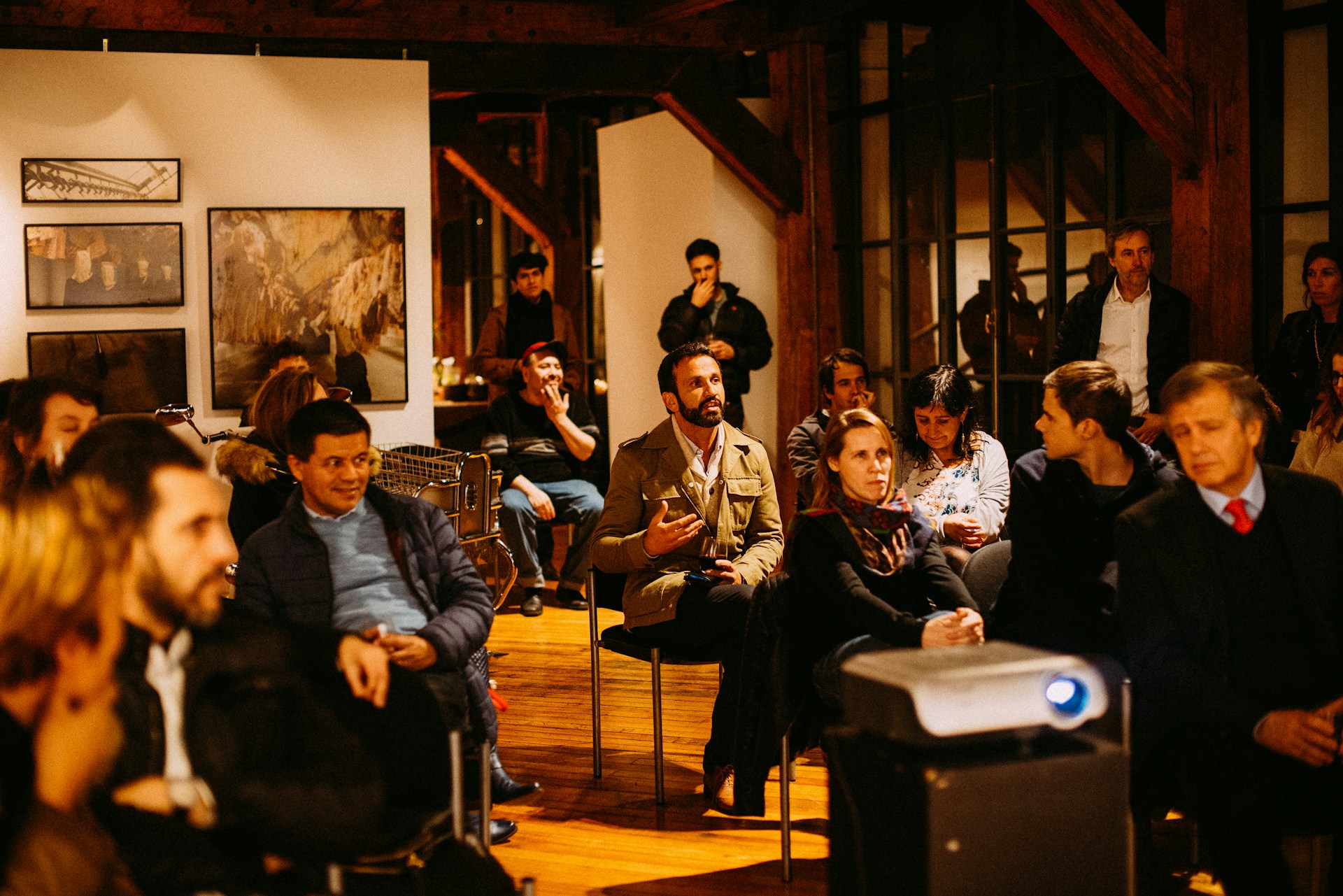
Free events are a popular strategy used by brands, communities, and organisations who want to reach new audiences, boost visibility, or create meaningful engagement. They remove financial barriers, attract larger crowds, and often generate valuable awareness. However, running free events also presents challenges, particularly when it comes to cost control, time investment, and attendee quality.
This guide explores the advantages and disadvantages of hosting free events so event planners can decide whether they align with their goals.
Removing the cost of entry naturally attracts more attendees. Free events feel accessible to a wider segment of people, including those who may not take a risk on a paid experience. This can dramatically improve turnout and raise visibility for your brand.
Free events also perform well across social media. Attendees are more likely to share and invite friends, helping you extend your reach without increasing your marketing spend.
Free events help position your brand as generous, community minded, and confident in the value you offer. When people experience your work without committing financially, they are more likely to remember you and trust you in future.
Allowing attendees to try something freely can even accelerate your reputation as an authority within your sector, especially when the event includes valuable content, expertise, or creative experiences.
Free events bring people together, support local culture, and create a shared sense of belonging. They give participants an opportunity to meet others with similar interests, form new connections, and interact with your brand in a relaxed, welcoming environment.
This stronger sense of community often leads to greater loyalty and more meaningful long term relationships.
Whilst the event itself is free, the real value lies in the opportunity to meet new people. Free events are an effective way to:
Capture contact details
Introduce your products or services
Build trust before any commercial relationship
Gather a highly engaged audience for future outreach
Many brands see free events as a top-of-funnel strategy that later converts into sales, partnerships, or paid bookings.
Free workshops, talks, tours, and networking sessions allow you to demonstrate your knowledge in a real, human way. Sharing insights openly helps you establish thought leadership and build credibility with attendees, leading to repeat engagement and referrals.
Free events create relaxed environments where people can connect informally. Attendees meet you, your team, and each other, which can result in future partnerships, collaborations, or bookings.
Offering something of value at no cost often encourages goodwill. People appreciate the experience and are more inclined to support your brand in the future, whether that involves attendance at paid events, hiring your venue, or recommending you to others.
Free events attract a mix of people who can provide useful feedback. Their comments and behaviour can help shape your future event strategy, refine your offering, and identify what resonates most with your audience.
Even if guests do not pay, you still do. Free events require budget for:
Venue hire
Catering
Staffing
Technical support
Marketing
Supplies and logistics
Without revenue from ticket sales, these costs must be absorbed or supported through sponsorships.
Free access can attract people who are not genuinely interested in the content or purpose of the event. This can impact atmosphere and engagement, and sometimes reduce the overall quality of the experience for dedicated attendees.
No shows are also more common with free tickets, which can complicate planning.
Although the event is free for guests, it still requires careful planning. Free events often demand:
More communication
More maintenance
Larger teams
Greater logistical oversight
This workload must be justified by the event outcomes.
People tend to value what they pay for. Free events can sometimes feel less premium or less curated, which may affect perceived brand value if not managed carefully.
Without ticket sales, the event must be financed through other means. If there are no alternative revenue streams, the event may become financially unsustainable.
Free events can still generate value through:
Sponsorship from aligned brands
Partnerships with vendors or local businesses
Upsells, such as premium experiences or upgrades
Merchandise sales
Data collection for future marketing
Follow up paid events, bookings, or memberships
These strategies help maintain accessibility whilst balancing financial responsibility.
Hosting free events can be a powerful way to grow your audience, build community, enhance brand perception, and establish authority. They create opportunities for connection, learning, and visibility that often extend far beyond the event itself.
However, free events also require careful planning, clear goals, and realistic expectations. Event organisers must weigh the benefits of increased reach and engagement against the challenges of cost, time, and varied attendee commitment.
Used strategically, free events can be an effective part of a broader event or brand strategy, supporting long term growth and deeper relationships.

Private events are designed to feel personal, exclusive, and carefully curated. Whether the occasion is a milestone celebration, corporate gathering, brand experience, or intimate dinner, private events place emphasis on customisation, privacy, and attention to detail. This is what makes them more memorable and refined than standard public events.
Below are the key features that define private events and elevate them into meaningful, thoughtfully designed experiences.
One of the strongest characteristics of a private event is the ability to personalise the environment. Hosts can tailor:
Colour palettes
Lighting
Styling and décor
Floral arrangements
Signage and branding
Mood and atmosphere
This allows each event to feel unique and reflective of the host’s vision or brand identity. Custom décor transforms a space from ordinary to emotionally resonant.
Private events rely on a carefully selected guest list. This creates intimacy, exclusivity, and a sense of belonging. With a smaller, curated group, hosts can:
Offer personalised attention
Foster deeper interactions
Create a more elevated atmosphere
Ensure guests share a common connection or purpose
A refined guest list contributes significantly to the tone and experience of the event.
Food is central to private events. Menus are often customised to match the host’s tastes, cultural influences, or the event theme. Personalised options may include:
Bespoke tasting menus
Interactive food stations
Tailored wine pairings
Allergy friendly and dietary alternatives
Signature cocktails
These details transform dining into an experience rather than a formality.
Private events typically involve a dedicated event coordinator who ensures seamless execution from start to finish. Their responsibilities include:
Understanding the host’s vision
Managing suppliers
Overseeing timelines
Coordinating staff
Solving issues discreetly
Ensuring smooth flow on the day
With expert support, hosts can focus fully on their guests while knowing every detail is being managed professionally.
Privacy is one of the defining components of a private event. Guests should feel comfortable, relaxed, and able to enjoy the moment without distraction. Key elements include:
Exclusive venue hire
Controlled access
Limited or private entry points
Confidentiality where required
Exclusivity strengthens the experience and enhances the overall atmosphere.
Private events often take place in distinctive settings such as:
Lofts and penthouses
Historic buildings
Private homes
Rooftop terraces
Art galleries
Boutique studios
A unique venue enhances ambience, supports personalisation, and adds meaning to the event. The backdrop itself becomes part of the story.
Personalised entertainment allows guests to feel immersed and engaged. Options include:
Live music
Creative workshops
Interactive performances
Cocktail masterclasses
Games or team activities
Guest speakers or performers
These features elevate the gathering and create memorable shared moments.
Private events allow greater flexibility than public ones. Hosts can:
Choose exact start and finish times
Stagger guest arrival
Extend the event if the atmosphere calls for it
Design the flow without external restrictions
Flexibility helps events feel natural and comfortable rather than rushed or rigid.
A higher level of privacy requires stronger attention to safety. Common measures include:
Professional security staff
Guest list checks
Surveillance coverage
Emergency planning
Controlled entry points
These measures protect the guests and maintain the exclusivity of the event.
Private events often include elevated services such as:
Concierge style support
Dedicated hosts
Premium décor and furniture
High end audiovisual equipment
Luxury tableware
Personalised gifting
These elements create a polished, thoughtful experience that feels special from start to finish.
Every detail contributes to the overall impact. This includes:
Seating arrangements
Flow of the room
Lighting transitions
Temperature control
Timely service
Smooth logistics
Private events thrive on precision. Careful coordination ensures guests feel valued throughout.
Ultimately, the purpose of a private event is to create a moment people will remember. This could come from:
A beautifully designed setting
Exceptional food
Moving speeches
Immersive entertainment
Personal touches tailored to the guests
Private events offer emotional connection, comfort, and refined experiences that connect people in meaningful ways.
Private events stand out because they prioritise personalisation, intimacy, and premium experiences. With custom décor, curated guest lists, bespoke menus, discreet security, and attentive coordination, they create a refined environment where every detail is deliberate and every moment feels significant.
When executed with care, private events can leave lasting impressions and strengthen relationships, whether they are personal celebrations or corporate gatherings.
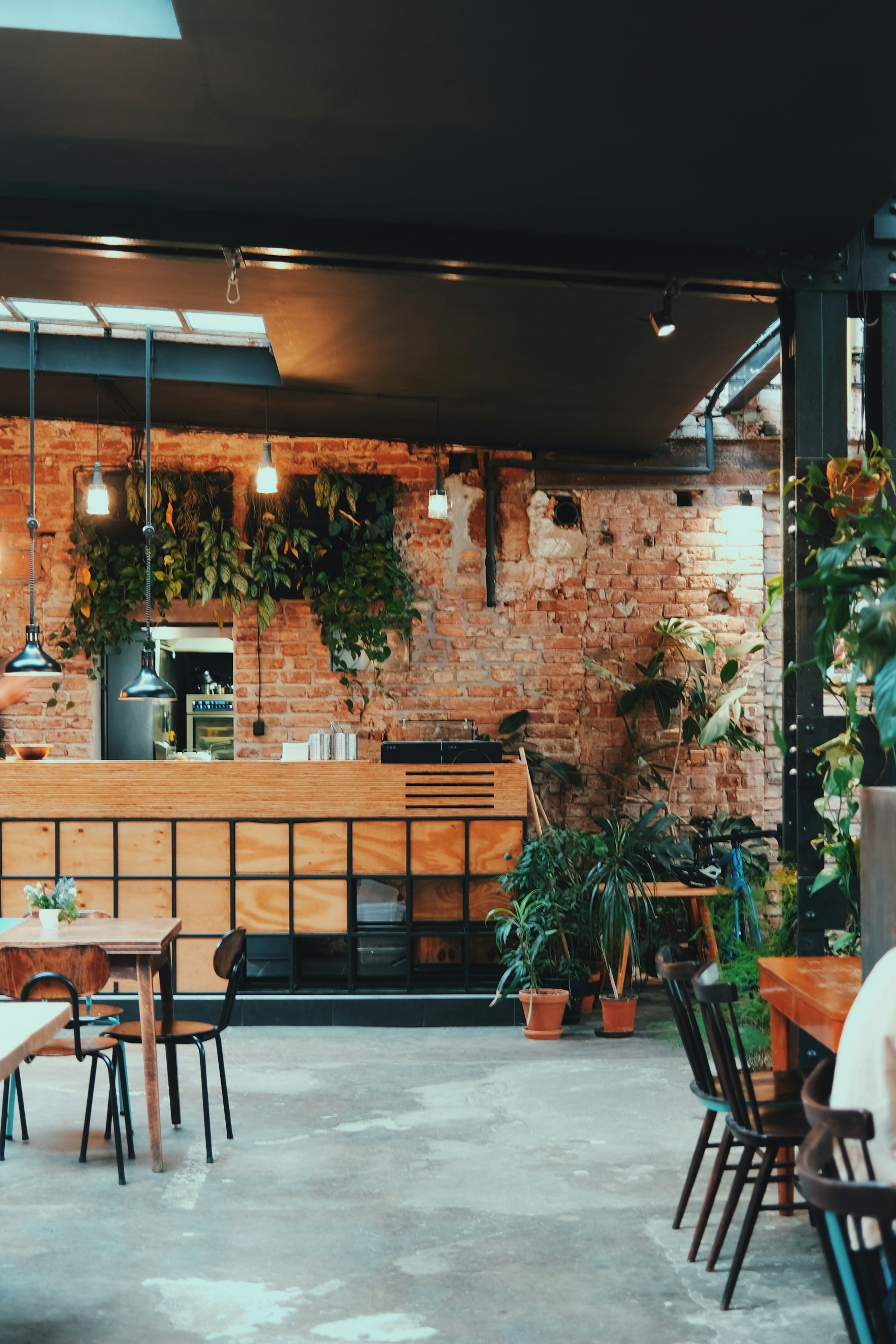
Choosing the right venue is one of the most influential decisions in event planning. A private party venue gives you control, comfort, and the freedom to create an experience that feels tailored and memorable. Whether you are hosting a milestone celebration, corporate gathering, team event, or launch party, private venues offer distinct advantages over public or shared spaces.
Below are the key benefits of using a private party venue.
Private venues specialise in tailored service. Staff focus solely on your event, ensuring every detail aligns with your preferences. This may include personalised décor, curated menus, customised layouts, or bespoke experiences that reflect your vision.
Individual attention from the venue’s team creates a seamless and polished experience for you and your guests.
With a private venue, the entire space is reserved for your event alone. This gives you:
Complete control over layout
Flexibility over timings
Freedom to theme and decorate
A calm environment without external noise or interruptions
Exclusive use helps create an intimate and immersive atmosphere.
Privacy is one of the biggest advantages of private party venues. Only invited guests can access the space, allowing everyone to relax and enjoy the experience without distractions. This suits both personal celebrations and corporate events where confidentiality or comfort is important.
Private venues come in all styles, from lofts and penthouses to industrial studios, townhouses, terraces, and boutique spaces. Each location brings character and atmosphere that contribute to a memorable event.
A distinctive setting elevates the experience and helps your celebration stand out.
Private venues allow complete flexibility with:
Event schedules
Floor plans
Décor and theming
Entertainment
Catering formats
This means you can design an event that feels entirely bespoke, rather than adapting to the limitations of a public venue.
Many private party venues offer high quality facilities such as:
Modern audiovisual equipment
Beautiful furniture
Thoughtful lighting
Outdoor areas
Breakout spaces
Lounge zones
These built in amenities reduce the need for external rentals and enhance the comfort of the event.
Professional staff can assist with planning, coordination, supplier management, setup, and on the day logistics. Their expertise ensures everything runs smoothly, allowing you to enjoy the event rather than worry about details.
Private venues often partner with experienced caterers or have in house chefs who can create tailored menus. Whether you want canapés, a formal dinner, sharing platters, themed cocktails, or dietary specific options, private venues make it easy to design the perfect menu.
Many private venues are centrally located with good transport links or on site parking options. This reduces travel stress and improves the overall guest experience.
Private party venues streamline the planning process by offering packages, preferred suppliers, and experienced staff. They handle complex details so you can focus on hosting and enjoying your event.
Private venues typically include professional security measures such as controlled entry, CCTV, trained staff, and safe access routes. This ensures peace of mind for both hosts and guests.
Private venues allow complete freedom to bring a theme to life, whether elegant, playful, seasonal, creative, or branded. This creative flexibility helps you transform the venue into a bespoke environment that reflects your style.
Private party venues offer unmatched advantages in personalisation, comfort, privacy, and service. They allow you to design a memorable, meaningful, and beautifully executed event with ease. Whether for a corporate gathering or personal celebration, a private venue sets the stage for an elevated experience your guests will remember.
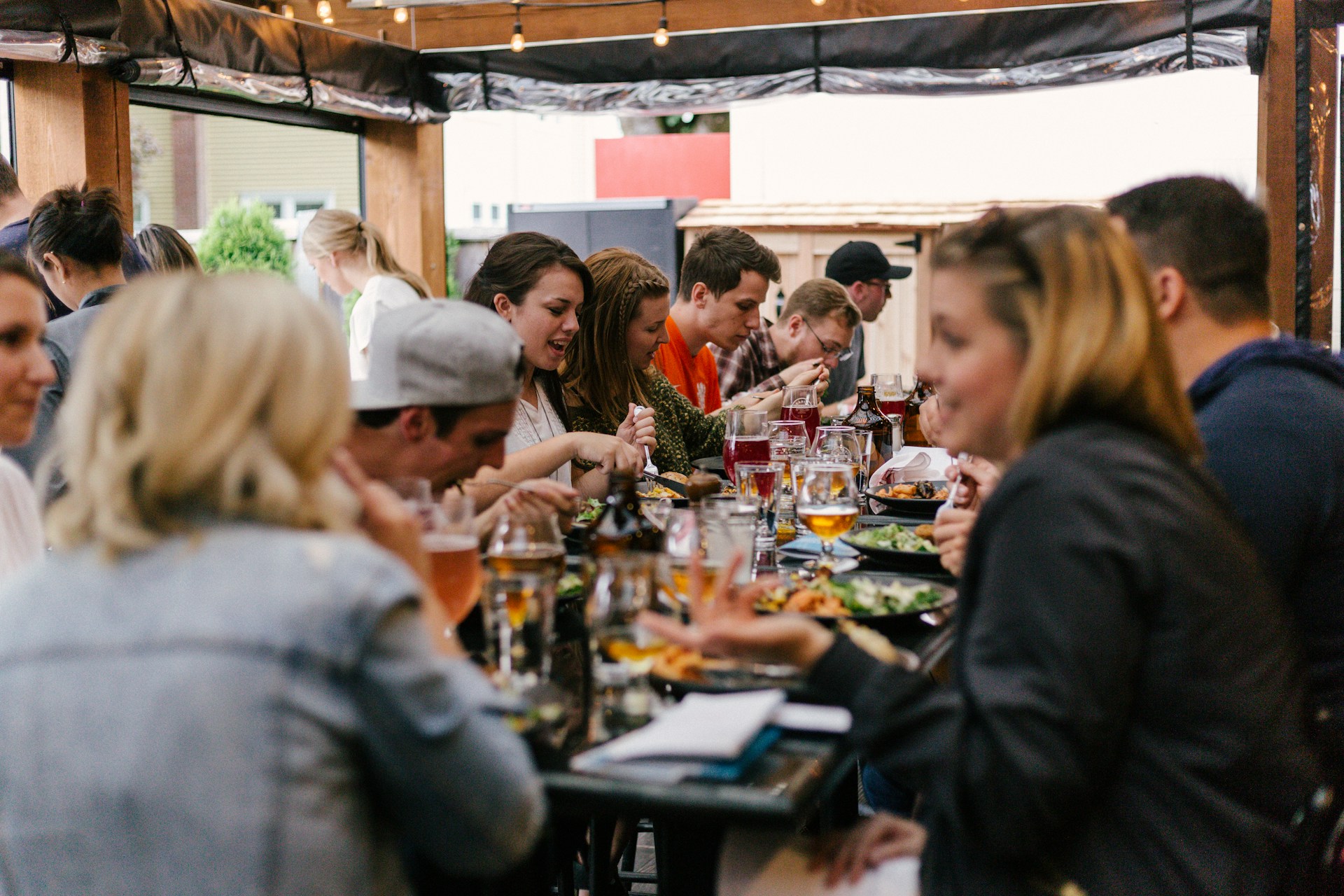
A strong theme can transform a standard corporate gathering into a memorable experience. Themes help shape atmosphere, inspire décor choices, guide entertainment, and create a sense of shared excitement among guests. Whether you are planning an end of year celebration, team building day, client evening, brand activation, or summer party, the right theme sets the tone.
Below are some of the best corporate party theme ideas that bring energy, creativity, and a touch of theatre to professional events.
A casino theme offers instant excitement and encourages guests to socialise. Hire professional croupiers, set up blackjack and roulette tables, and provide themed lighting to create the full casino experience. Use play money or tokens to keep things light and competitive. This theme works especially well for team celebrations and incentive events.
Elegant and atmospheric, a masquerade ball brings mystery and glamour to a corporate event. Think velvet drapes, chandeliers, candlelight, dramatic masks, and classical or jazz music. Guests can dress in evening wear embellished with masks, which adds to the immersive experience. This theme suits awards nights or client appreciation evenings.
A tropical themed party creates a relaxed, colourful environment. Decorate with palm leaves, floral garlands, tiki torches, and bright lighting. Serve tropical cocktails and fresh dishes inspired by Hawaiian cuisine. Add hula performers or live island style music to complete the atmosphere.
Inspired by the luxury and decadence of the 1920s, this theme invites bold patterns, sequins, feathers, champagne towers, and jazz bands. Encourage guests to dress in flapper dresses, tailored suits, and vintage accessories. A Gatsby party brings instant glamour to any company celebration.
A fun, light hearted theme ideal for younger teams or creative industries. Guests can dress as their favourite superheroes and take part in themed games or challenges. Branded props, comic style décor, and bold colours help energise the space.
Bring back nostalgia with classic arcade games, neon lighting, and themed snacks like popcorn and soft drinks. Set up gaming stations with Pac Man, Space Invaders, or pinball machines. This theme is interactive, lively, and great for team building.
Transport guests across continents with décor, cuisine, and music from various cultures. Create themed food stations, cultural performances, or travel inspired games. This theme suits larger corporate events where guests can explore different zones throughout the evening.
Ideal for competitive teams, a sports themed event can include mini tournaments, challenges, and demonstrations. Décor may feature team colours, trophies, goal posts, or pitches. This theme encourages teamwork and friendly competition.
Roll out a red carpet and give guests a true Hollywood welcome. Use spotlights, gold accents, film props, and awards style staging. Add photographers or celebrity impersonators to complete the experience.
A carnival theme brings playful energy to a company party. Include fairground games, bright colours, classic treats such as candy floss and popcorn, and vintage signage. This theme is perfect for summer or outdoor parties.
Create a rustic Western atmosphere with hay bales, lanterns, horseshoes, and denim inspired styling. Add line dancing, country music, and themed food such as barbecue dishes. This theme is charming, energetic, and a strong option for casual company parties.
Immerse guests in a world of ocean themed décor, blue lighting, shimmering fabrics, and marine inspired styling. Add themed cocktails, seafood stations, or immersive entertainment such as costumed performers. This theme is visually striking and encourages creativity.
Corporate party themes are an opportunity to elevate your event, energise your team, and create a shared experience that breaks routine. From glamorous soirées to playful retro nights, the right theme enhances atmosphere, encourages conversation, and leaves a lasting impression.
Choose a theme that suits your company culture, event goals, budget, and guest demographics, and let it guide the rest of your planning.

Business events are about more than presentations and cateri...

Business events shape how clients, colleagues, and partners...

Whether you’re hosting a client meeting, a creative workshop...

Turning a private property into a successful event space tak...

Success in venue hire isn’t just about filling the calendar...

London is full of options: sleek co-working rooms, boutique...

London is one of the world’s busiest business hubs, hosting...

Booking a meeting room seems simple, but timing can make all...

Organising a corporate party may look simple at first glance...

A great meeting room layout does far more than determine whe...

Corporate events management is the structured process of pla...

Planning an event in London can be time consuming and overwh...

Choosing the right venue is one of the most influential deci...

Free events are a popular strategy used by brands, communiti...

Private events are designed to feel personal, exclusive, and...

Choosing the right venue is one of the most influential deci...

The Best Corporate Party Theme IdeasA strong theme can trans...